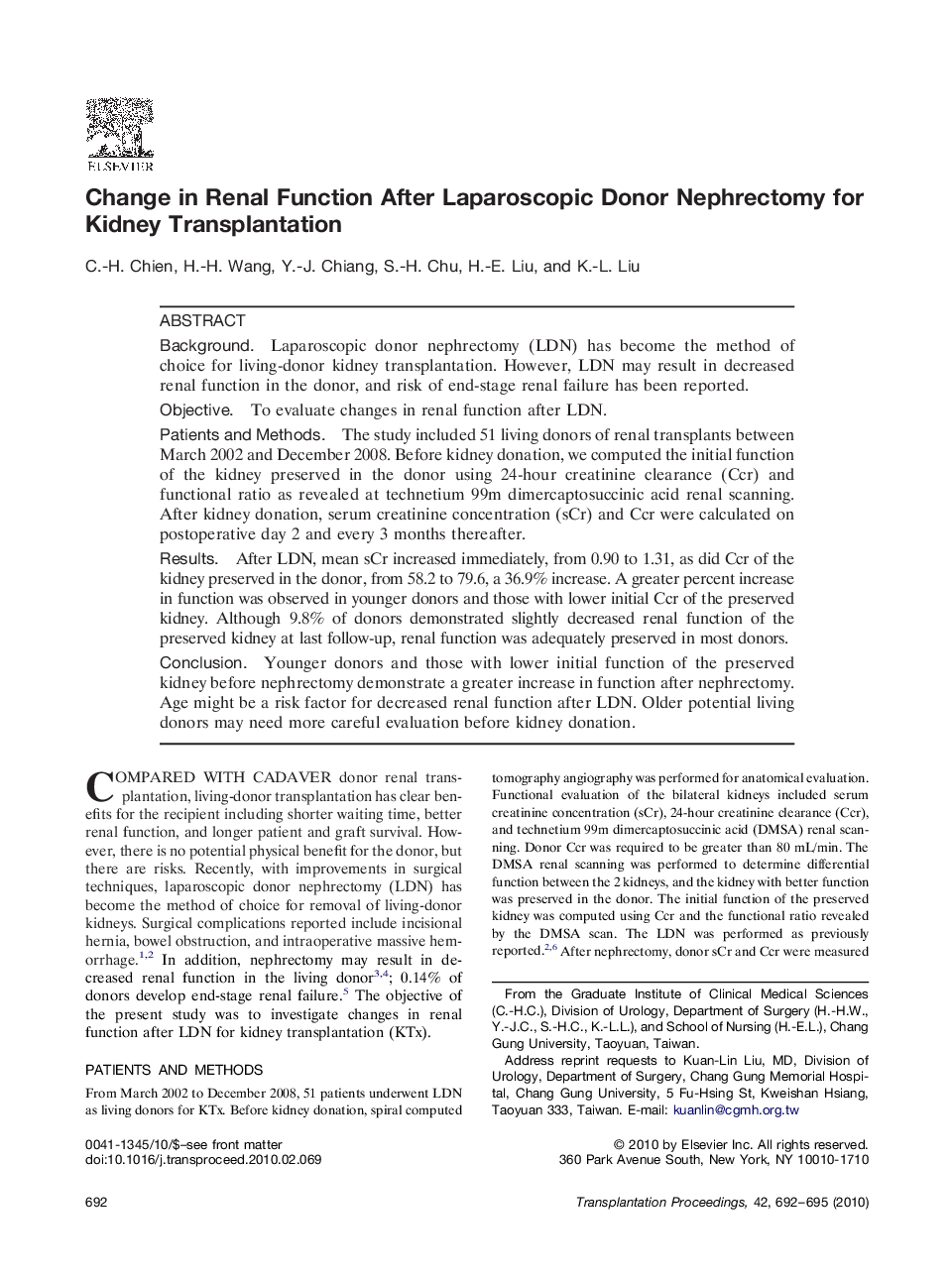| Article ID | Journal | Published Year | Pages | File Type |
|---|---|---|---|---|
| 4258106 | Transplantation Proceedings | 2010 | 4 Pages |
BackgroundLaparoscopic donor nephrectomy (LDN) has become the method of choice for living-donor kidney transplantation. However, LDN may result in decreased renal function in the donor, and risk of end-stage renal failure has been reported.ObjectiveTo evaluate changes in renal function after LDN.Patients and MethodsThe study included 51 living donors of renal transplants between March 2002 and December 2008. Before kidney donation, we computed the initial function of the kidney preserved in the donor using 24-hour creatinine clearance (Ccr) and functional ratio as revealed at technetium 99m dimercaptosuccinic acid renal scanning. After kidney donation, serum creatinine concentration (sCr) and Ccr were calculated on postoperative day 2 and every 3 months thereafter.ResultsAfter LDN, mean sCr increased immediately, from 0.90 to 1.31, as did Ccr of the kidney preserved in the donor, from 58.2 to 79.6, a 36.9% increase. A greater percent increase in function was observed in younger donors and those with lower initial Ccr of the preserved kidney. Although 9.8% of donors demonstrated slightly decreased renal function of the preserved kidney at last follow-up, renal function was adequately preserved in most donors.ConclusionYounger donors and those with lower initial function of the preserved kidney before nephrectomy demonstrate a greater increase in function after nephrectomy. Age might be a risk factor for decreased renal function after LDN. Older potential living donors may need more careful evaluation before kidney donation.
